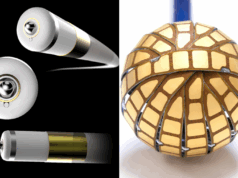The one-year results from the first European study of real-life epidemiology of catheter ablation for atrial fibrillation has highlighted differences between the European Society of Cardiology (ESC) recommendations and actual clinical practice.
The first-year results of the Atrial Fibrillation Ablation Pilot Registry, which is part of the EURObservational Research Programme, was presented as a late-breaking trial at the annual meeting of the European Society of Cardiology in Munich, Germany. According to study presenter and co-investigator Elena Arbelo, Hospital Clínic de Barcelona, Spain, the registry was designed to describe: “The clinical epidemiology of patients undergoing atrial fibrillation catheter ablation across Europe and to evaluate the therapeutic and diagnostic procedures in these patients.” She added that they evaluated, after one year, the success rate and the complication rate of catheter ablation, and how the 2010 ESC guidelines for the management of atrial fibrillation were being implented in a real-life setting.
More than 1,400 patients, from 10 different European countries (at 72 centres overall), were enrolled in the registry, and data was available for 1,300 patients after 12 months of follow-up (some patients did not receive ablation and some were lost to follow-up). Arbelo said that they defined success, after one year, as “Survival free from any documented atrial arrhythmias with or without antiarrhythmic drugs. This was after a three-month blanking.”
For nearly 90% (89.9%) of patients undergoing catheter ablation, the main indication for treatment was symptoms. Also, Arbelo said, a third of patients wanted a drug-free lifestyle as well as being free of symptoms. During the 12-month follow-up period, 30% of patients were re-admitted to hospital (mainly because of atrial fibrillation, atrial flutter or tachycardia), and 26.1% had an arrhythmia recurrence (including 18% who underwent a repeat ablation procedure)-thus ablation was “successful” in 74% of patients. Additionally, overall, symptoms were significantly reduced after the procedure (the most common symptoms were palpitations, fatigue, and dyspnoea). Arbelo reported: “After the end of one year, 55% of patients were asymptomatic,” and added that 88.1% of patients were in sinus rhythm and 7.6% were in atrial fibrillation.
Complications during follow-up were rare (2.6%) and were mainly due to vascular complications during re-do procedures or due to cerebrovascular events.
Regarding pharmacological therapy, the investigators found that that 32% of patients were receiving antiarrhythmic drugs at the one-year follow-up point. Additionally, 64.7% of patients were receiving anticoagulation therapy. Arbelo commented: “It is surprising to see that when we analysed the data by cardioembolic risk, we had as much as half of the population with a very low cardioembolic risk on anticoagulant therapy at 12 months. On the other hand, in patients with a high risk of cardioembolic events, up to 20–25% were not on anticoagulant treatment.”
Arbelo said: “There is a clear gap between recommendations and actual clinical practice that should be considered when designing management strategies of patients suffering from atrial fibrillation.” She added that further analysis by geographical areas may contribute by identifying local or more generalised needs in relation to catheter ablation.









